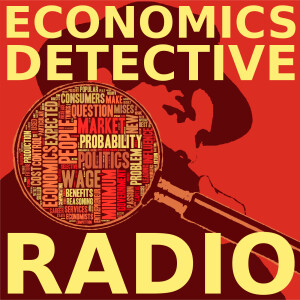
Replicating Anomalies in Financial Markets with Hou, Xue, and Zhang
 2017-06-30
2017-06-30
Download
Right click and do "save link as"
In this episode, I have three guests on the show with me: Kewei Hou of Ohio State University, Chen Xue of the University of Cincinnati, and Lu Zhang of Ohio State University. Kewei, Chen, and Lu have coauthored a paper titled "Replicating Anomalies," a large-scale replication study that re-tests hundreds of so-called "anomalies" in financial markets. An anomaly is a predictable pattern in stock returns, or stated differently, it is a deviation from the efficient markets hypothesis. Their abstract reads as follows: The anomalies literature is infested with widespread p-hacking. We replicate the entire anomalies literature in finance and accounting by compiling a largest-to-date data library that contains 447 anomaly variables. With microcaps alleviated via New York Stock Exchange breakpoints and value-weighted returns, 286 anomalies (64%) including 95 out of 102 liquidity variables (93%) are insignificant at the conventional 5% level. Imposing the cutoff t-value of three raises the number of insignificance to 380 (85%). Even for the 161 significant anomalies, their magnitudes are often much lower than originally reported. Out of the 161, the q-factor model leaves 115 alphas insignificant (150 with t We discuss the process of replicating these anomalies, issues involving the use of equal-weighted vs value-weighted returns, and the problems of p-hacking in finance research. Works Cited Hamermesh, Daniel S. 2007. “Replication in Economics.” Canadian Journal of Economics 40(3):715–733. Kewei Hou, Chen Xue, Lu Zhang; Digesting Anomalies: An Investment Approach. Rev Financ Stud 2015; 28 (3): 650-705. Hou, Kewei and Xue, Chen and Zhang, Lu, Replicating Anomalies (June 12, 2017). Charles A. Dice Center Working Paper No. 2017-10; Fisher College of Business Working Paper No. 2017-03-010. Other Links The Marginal Revolution post on this paper.
view more
More Episodes
Writing and Thinking Less Badly with Mike Munger
 2016-10-14
2016-10-14
 29
29
 2016-10-14
2016-10-14
 29
29
New York Urbanism with Stephen Smith
 2016-10-07
2016-10-07
 2
2
 2016-10-07
2016-10-07
 2
2
Democracy Versus Epistocracy with Jason Brennan
 2016-09-30
2016-09-30
 2
2
 2016-09-30
2016-09-30
 2
2
The Costs of Ethnic Diversity with Garett Jones
 2016-07-22
2016-07-22
 2
2
 2016-07-22
2016-07-22
 2
2
Icelandic Sovereign Money with Ash Navabi
 2015-10-30
2015-10-30
 2015-10-30
2015-10-30
012345678910111213141516171819
Create your
podcast in
minutes
- Full-featured podcast site
- Unlimited storage and bandwidth
- Comprehensive podcast stats
- Distribute to Apple Podcasts, Spotify, and more
- Make money with your podcast
It is Free
- Privacy Policy
- Cookie Policy
- Terms of Use
- Consent Preferences
- Copyright © 2015-2024 Podbean.com




